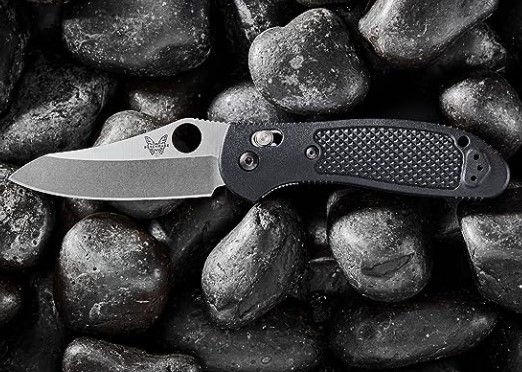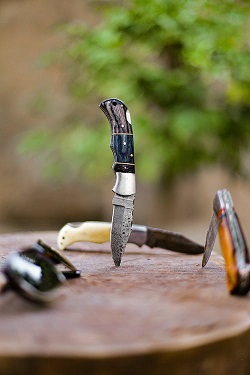What is the Best Angle to Sharpen a Pocket Knife? Finding the Perfect Angle
What if you are in the wilderness, facing the ultimate test of survival? You reach for your pocket knife, only to discover it’s about as sharp as a loaf of bread. Disappointment sinks in, and you realize it’s time to tackle the age-old question: What is the best angle to sharpen a pocket knife? Sharpening a pocket knife at the best angle is tricky; only some people are good at it. Buckle up, grab your sharpening stones, and get ready to slice through the mysteries of knife angles like a seasoned pro!
Table of Contents
What is the Best Angle to Sharpen a Pocket Knife?
Understanding the Angle
When sharpening a pocket knife, the angle at which you sharpen it is crucial in determining its cutting performance.
The angle refers to the slope at which you grind the blade’s edge, affecting your knife’s sharpness and durability. You can try different pocket knife sharpening options according to your cutting needs.
Acute Angles- Razor-Sharp Precision
An acute angle is your go-to choice if you are looking for sheer cutting power and precision. An angle between 10 to 15 degrees creates an incredibly sharp edge, resembling a surgeon’s scalpel.
This angle excels in tasks that require precise, delicate cuts, such as peeling an apple’s skin or slicing a ripe tomato.
Remember, knives sharpened at such a low angle due to the narrow edge tend to be more fragile. They’re prone to chipping or dulling quickly, especially when subjected to heavy-duty tasks like chopping wood or cutting through tough materials. So, while this angle may be perfect for intricate tasks, some scenarios have better choices.
Moderate Angles- Striking a Balance
For an all-around performer, a moderate angle is a sweet spot. Ranging between 17 to 22 degrees, this angle balances sharpness and durability, making it suitable for various everyday tasks.
Knives sharpened at a moderate angle offer excellent versatility. Need to carve a branch for roasting marshmallows? No problem. How about gutting a fish? It’s got your back. A moderate angle ensures a sharp edge that can withstand moderate use without compromising durability.
Obtuse Angles- Tough and Tenacious
Imagine embarking on a rugged outdoor adventure where your knife will be pushed to its limits. In such a condition, an obtuse angle is your ally, and this angle, between 25 to 30 degrees, enhances the blade’s strength and durability.
Knives sharpened at an obtuse angle are perfect for heavy-duty tasks. Think of chopping firewood, building a shelter, or prying open stubborn objects. The increased thickness at the edge adds resilience, ensuring your knife remains robust even under intense pressure.
Pocket Knife Sharpening Angles Based on Materials
| Material Type | Best Sharpening Angle Range |
| Soft Steel | 20-25 degrees |
| Stainless Steel | 17-22 degrees |
| High Carbon Steel | 15-20 degrees |
| Damascus Steel | 15-20 degrees |
| Ceramic Blade | 25-30 degrees |
A Journey of Personal Preference
Now that you understand the different angles, you might wonder, “Which angle is the best?” Well, my friend, there’s no one-size-fits-all answer. The best angle depends on your needs, the type of knife you have, and the tasks you intend to tackle.
For example, if you primarily use your pocket knife for delicate tasks like intricate wood carving, a lower angle might be your cup of tea.
On the other hand, if you’re an avid outdoors enthusiast who needs a reliable tool for a wide range of tasks, a moderate angle could be your best bet.
Honing in on Perfection
Sharpening a pocket knife isn’t a one-time event; it’s an ongoing process to maintain its performance. No matter the angle you choose, regular honing is essential. Honing, or using a honing rod, helps realign the microscopic teeth on the blade, keeping it in optimal condition between sharpening.
It’s important to note that the specific angles mentioned earlier are general guidelines. The angle you choose may vary depending on the blade geometry and the manufacturer’s recommendations. Some pocket knives come with pre-set angles, so checking the manufacturer’s instructions is worth checking to ensure you’re sharpening your knife correctly.
Best Pocket Knife Sharpening Techniques
Sharpening Stone
This classic method involves using a sharpening stone to grind the blade manually. Start by lubricating the stone with water or honing oil.
Then, holding the blade at the desired angle, move it sweepingly across the stone, alternating sides.
Maintain a consistent angle and apply gentle pressure to achieve a uniform edge.
Guided Sharpening System
A guided sharpening system takes the guesswork out of finding the right angle.
These systems come with angle guides that ensure you maintain a consistent angle while sharpening. Follow the manufacturer’s instructions and let the guide do the work.
Sharpening Tools
If you prefer a more user-friendly approach, various sharpening tools are available. These tools often feature built-in angle guides or pre-set angles, making it easier to achieve consistent results.
Examples include sharpening rods, honing guides, and sharpening jigs.
Remember, practice makes perfect. Finding the technique that works best for you may take some trial and error, but with patience and practice, you’ll soon become a master of sharpening.
Final Words
Whether you choose an acute angle for surgical precision, a moderate angle for everyday versatility, or an obtuse angle for rugged durability, the choice is yours. Proper maintenance is key to prolonging your blade’s sharpness and lifespan. Regular honing and periodic sharpening will ensure your pocket knife is always ready for action. So, the next time you embark on an outdoor adventure or face a challenging task, your trusty pocket knife will be by your side, eager to slice through any obstacle.
Frequently Asked Questions (FAQs)
- Is it Good to Sharpen a Pocket Knife at a Lower Angle?
Sharpening a pocket knife at a lower angle, around 10 to 15 degrees, can result in a razor-sharp edge.
- Can the Type of Steel in a Pocket Knife Blade Impact the Ideal Sharpening Angle?
The type of steel used in the pocket knife blade can impact the ideal sharpening angle. Different steel compositions have different hardness levels, affecting how well the blade holds its edge. Harder steels may be better suited for lower angles, while softer steels need slightly higher angles for optimal sharpness and durability.
- How Does the Angle at Which I Sharpen My Pocket Knife Affect Its Performance?
The angle at which you sharpen your pocket knife directly impacts its performance. Lower angles, like 10 to 15 degrees, result in a sharper edge; moderate angles, around 17 to 22 degrees, strike a balance between sharpness and durability, and higher angles, between 25 to 30 degrees, enhance durability but sacrifice some cutting precision.







